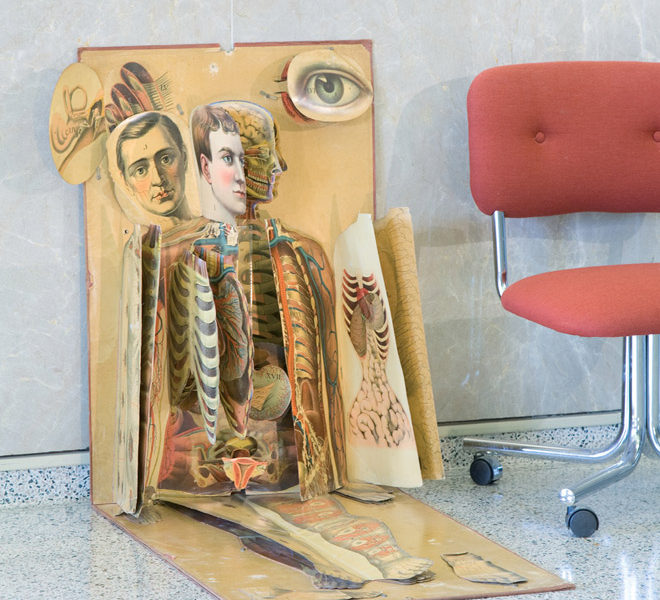
Curious Medicine: Rarely seen images from world’s largest medical library
The National Library of Medicine in the US has been around for 175 years now. The largest medical library of the world, they have some really astounding pictures from medicine’s history. Check out the following, for instance.
Atlas of topographic anatomy, 1911

The body part has been scientifically mummified before sawing it into slices so that the anatomy within could be revealed. This process was named megatomy by the Parisian surgeon, Eugene-Louis Doen and was significantly different from current anatomical studies.
The doctor’s view of Hitler, 1945-46

One among the five known X-rays of Hitler’s head. This comes as part of the fuhrer’s medical records compiled by American intelligence after the surrender of Germany. It was declassified in 1958. These records also contain doctor’s reports, diagrams of his nose and teeth and also electrocardiograms.
Clinical collection on dermatology and syphilology, 1886-90

‘Clinial Collection 2’ was written by one Nikolai Porfirevich Mansurov. The book, published in 1887 contained an article on “hairy people.” Mansurov once encountered a case of polytrichia, which inspired the article. The book cover has the wood engraving of a “hairy man.”
Symptoms in schizophrenia, around 1930

A silent motion picture that documented symptoms of schizophrenia. It used 18 patients. The motion picture reveals the lack of understanding regarding cause and nature of the disease at the time. The disease’ origins, of course, are poorly understood even today.
Experimental surgery drawings, 1929-30

The above-given is a drawing by one William P. Didusch, It shows an operation to suture two dogs together at the neck. The operation was conducted by W.M. Firor.
Huber the tuber- A story of tuberculosis, 1943

Harry A Wilmer created an illustrated book for the National Tuberculosis Association. During that time, Wilmer himself was recovering from tuberculosis.
Complete study of human anatomy, 1831-54

The models used in the book are idealized because the authors insisted on it.
Easy to get, 1947

A film by the US military made as part of their campaign against venereal diseases. The film was aimed particularly at black soldiers. Women are portrayed in the film as super-promiscuous and men as without any self-control.
The epitome, 1543

Andreas Vesalius’ 18-pager on human anatomy was a sort of summary for his De humani corporis fabrica that became the foundational text for modern anatomy.
International nurse uniform photograph collection, around 1950

This collection of photographs depicted nurses’ uniforms from across the world.
The anatomy of the human body, 1386

This early book of human anatomy is ascribed to Mansur ibn Muhammad ibn Ahmad ibn Yusuf ibn Ilyas- a 14th century Persian physician who was probably just called ‘Ilyas’ by folks close to him. Squatting figures like the one given here were the dominant anatomical model in the Islamic world until the European models were introduced.
White’s physiological manikin, 1886

James T. White and Co. marketed this life-sized model of the human body for at least 20 years. The flaps corresponded to various lecture topics like circulatory system, the brain and nervous system etc.
Atlas of skin diseases(1856-76)

Two volumes of the book were brought out featuring chromolithographs. The image shown here is of children with a hereditary form of albinism.
Image credits: eyemagazine.com, wired.com